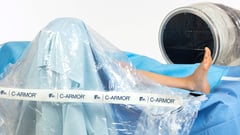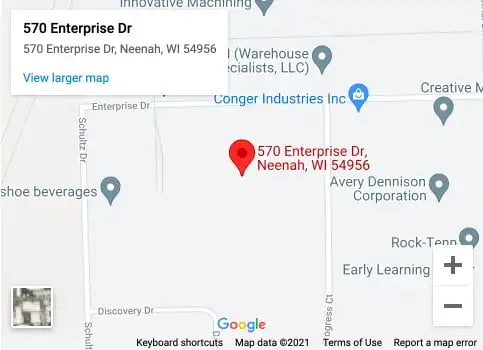 Introduction to Patient Restraints in Nursing
Introduction to Patient Restraints in Nursing
In healthcare settings, the compassionate care of nurses is essential to the well-being of patients, visitors, and co-workers. On occasion, nurses are called upon to use restraints to ensure safety and protection are maintained for both the patient and caregiver.
Knowing which situations warrant the use of restraints as nursing interventions, as well as which restraints to use, is imperative. Nonetheless, this information only represents a fraction of what nurses need to know to make decisions about the ethical and lawful use of restraints.
Definition of Restraints in Nursing
There are three general categories of restraints: physical, chemical, and seclusion.1 Physical restraints, the most frequently used of the three,1 are the focus of this article.
Hospital policy, state health department regulations, the Centers for Medicare & Medicaid Services (CMS), and The Joint Commission (TJC) set out the parameters defining physical restraint specifically as “…an intervention or device that prevents the patient from moving freely or restricts normal access to the patient’s own body…”1
Examples of physical restraint include:1
- Applying a wrist, ankle, or waist restraint
- Tucking in a bedsheet very tightly so a patient can’t move
- Keeping all side rails up to prevent a patient from getting out of bed
- Using an enclosure bed
Equally as important is knowing what isn’t considered a physical restraint. According to CMS guidelines regarding restraints, “Generally, if a patient can easily remove a device, the device would not be considered a restraint. In this context, ‘easily remove’ means that the manual method, device, material, or equipment can be removed intentionally by the patient in the same manner as it was applied by the staff, considering the patient’s physical condition and ability to accomplish the objective.”2
Such devices can be deemed less restrictive interventions and used when a physical restraint may be unnecessary. The following devices are not considered physical restraints:1
- Devices used to temporarily immobilize a patient during diagnostic procedures
- Orthopedic supportive devices
- Helmets or age-appropriate protective equipment (i.e., cribs and strollers)
Factors Influencing Restraints Use and Compliance
CMS, TJC, and state regulating agencies regard patient restraint as a high-risk intervention.3 Improper use could result in noncompliance, with substantial fines and sanctions levied against the healthcare facility.4 These strict policies and protocols often create a culture of fear surrounding the use and documentation of restraints.
Ultimately, patient condition and behavior drive the decision making behind the use of physical restraints:
Nonviolent, non-self-destructive behavior: Physical restraints may be necessary to enhance care by keeping a patient from pulling at tubes, drains, or lines.1 In some cases, physical restraints are required to keep a patient from attempting unsafe ambulation.1
Violent, self-destructive behavior: Violent or aggressive patient behavior is typically categorized as an emergency.1 As such, the use of physical restraints is appropriate to prevent or stop further self-harm and/or prevent injury to or escalation of threats against staff.1
 Accurate documentation of the restraint event is required, with the goal being to remove the restraints as soon as possible.4 To ensure proper care and strict compliance with state, TJC, and CMS guidelines, nurses are tasked with evaluating and documenting key factors pertaining to the event.3 Such key factors include:3
Accurate documentation of the restraint event is required, with the goal being to remove the restraints as soon as possible.4 To ensure proper care and strict compliance with state, TJC, and CMS guidelines, nurses are tasked with evaluating and documenting key factors pertaining to the event.3 Such key factors include:3
- Patient behavior that indicates the continued need for restraints
- Patient mental status, including orientation
- Number, type, and placement of restraints used
- Condition of patient extremities, including circulation, sensation, and range of motion
- Patient vital signs
- Skin care administered
- Food, fluids, and toileting
Restraint Choices
While there are many options on the market, hospital administration and policy stipulate the type of restraints available within a particular facility. In many cases they turn to Posey®, a brand trusted by nurses, for proven solutions such as limb holders, patient cuffs, roll belts, hospital mitts, and soft arm splints.
Of course, all restraints, regardless of type, are utilized only as a last resort. TIDI endeavors to go beyond simply providing these products by also offering continuing education opportunities and resources to give nurses training and confidence in their use of restraints.
Learn more about how TIDI protects patients and supports caregivers, as well as the many ways in which we assist nurses. Talk to the TIDI team today.
SOURCES
1American Nurse Today (G. Springer), When and how to use restraints, Volume 10, Number 1. https://www.myamericannurse.com/use-restraints/ Published online: January 13, 2015. Accessed online: November 2021.
2 https://www.cms.gov/Regulations-and-Guidance/Guidance/Transmittals/downloads/R37SOMA.pdf (page 96)
3 American Nurse Today (J. Woodard), Assessing and documenting patient restraint incidents, Volume 10, Number 1. https://www.myamericannurse.com/assessment-documentation/ Published online: January 13, 2015. Accessed online: November 2021.
4 https://www.cms.gov/Regulations-and-Guidance/Guidance/Transmittals/downloads/R37SOMA.pdf (pages 117, 118, 127, 128, 129-137)






 Introduction to Patient Restraints in Nursing
Introduction to Patient Restraints in Nursing Accurate documentation of the restraint event is required, with the goal being to remove the restraints as soon as possible.4 To ensure proper care and strict compliance with state, TJC, and CMS guidelines, nurses are tasked with evaluating and documenting key factors pertaining to the event.3 Such key factors include:3
Accurate documentation of the restraint event is required, with the goal being to remove the restraints as soon as possible.4 To ensure proper care and strict compliance with state, TJC, and CMS guidelines, nurses are tasked with evaluating and documenting key factors pertaining to the event.3 Such key factors include:3